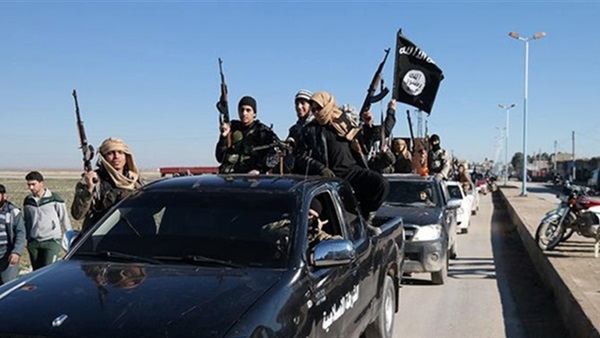Leader of ISIS in the Philippines spreads news of his death to elude security, seen with his followers

Despite the rumors of the killing of the leader of ISIS in the Philippines, Faharudin Hadji Satar, better known as Abu Zacharia, the Philippine army came out and confirmed that he was still alive in Southeast Asia in Mindanao.
Publicity maneuver
A week ago, a pro-ISIS media outlet in the Philippines announced Satar’s death.
In a statement last week, the Philippine military confirmed that the Philippine Marines had captured a camp of the pro-ISIS Maute group in Lanao del Sur province and recovered weapons and explosives.
Gen. Roy Galido, commander of the 6th Infantry Division, said information provided by civilians in Marogong, Lanao del Sur, about the presence of militants in Bagumbayan village led to the discovery of a hideout of ISIS extremists.
Seen with his followers
Intelligence reports also showed that Satar was seen in the area with about 30 of his armed followers, Galido said.
The villagers noticed new faces in their village and alerted the Philippine Marines, he said, adding that the residents saw 30 to 40 men who were suspected of being remnants of the Maute group that captured the city of Marawi in 2017.
The Philippine military announced on March 2 of this year that Abu Zacharia was the Southeast Asian leader of ISIS.
The East Asian Knights (EAK) had announced that Abu Zacharia had died on February 6 of this year, according to TRAC, before the army announced in March that he was the leader of ISIS in the region and was being hunted at the time.
The Philippine military indicated that the announcement of the death was likely an attempt to disrupt the Philippine army's campaign.
Security pursuits
The Philippine army launched a military campaign against the strongholds of local groups that pledged allegiance to ISIS in the southern province of Lanao del Sur, during which the camps of those groups were targeted, most notably a camp in the small town of Maguing east of Lake Lanao in the heart of Mindanao Island, which is controlled by Abu Zacharia.
Recently, the Philippine security forces have intensified their campaigns to pursue ISIS elements, and for this reason a number of elements have surrendered to the security forces, fearing for their lives.
The Philippines has witnessed unusual activity by armed extremist groups in the south of the country for decades, and earlier reports revealed an increase in defections in the ranks of the ISIS as a result of the failure to fulfill the promises made to members to live in luxury, in addition to the collapse of the false dreams of heroism after many discovered that they may be used as suicide bombers in the end.
Head of the terrorist organization
According to the Philippine army, Abu Zacharia was chosen as the head of the terrorist organization in East Asia, succeeding Owayda Marohombsar, nicknamed Abu Dar, who preceded him as the Maute leader and was killed in Lanao del Norte province in March 2019.
Abu Zacharia was part of the Maute group that laid siege to the city of Marawi in Lanao del Sur in May 2017 and fought government forces in a 5-month battle, during which around 1,200 people, mostly militants, were killed and much of the city was destroyed.
He is the nephew of Alim Abdul Aziz Mimbantas, the late Vice Chairman for Military Affairs of the Moro Islamic Liberation Front, a former rebel group that is now collaborating with the Philippine government.
According to The Diplomat newspaper, Abu Zacharia is “a member of the Mimbantas clan, which is quite famous in Butig in Lanao province.”





